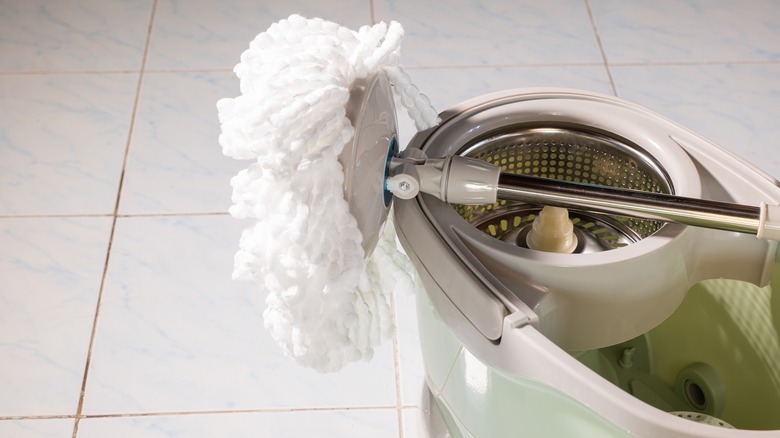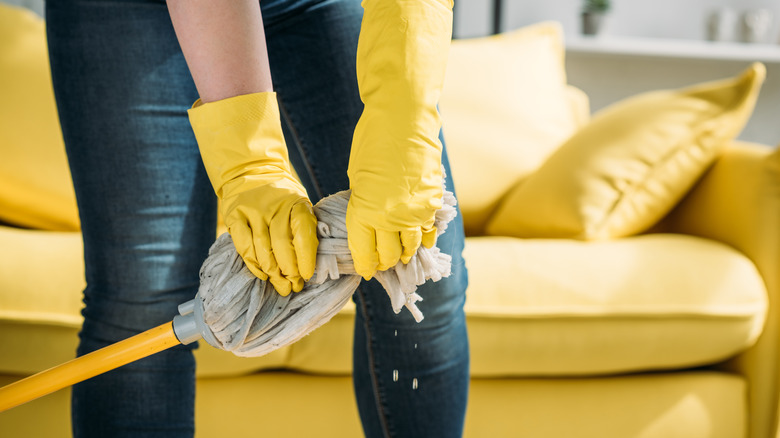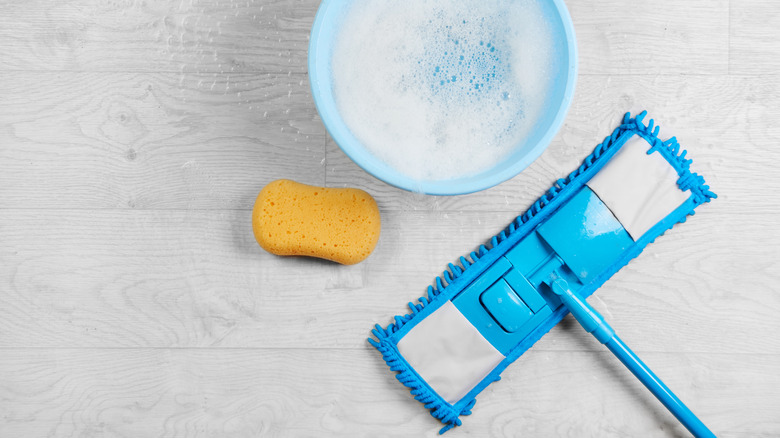The Best Way To Keep Your Mop Clean
To maintain a healthy and appealing living space, keeping your floors clean and hygienic is important. Along with rinsing after every use, a vital part of achieving this is to ensure that your mop is sanitary and well-maintained. Depending on your mop type, specific cleaning techniques should be used.
For example, a traditional cotton mop requires hand washing with gentle detergent, while a microfiber mop should be washed with mild detergent and warm water. Sponge mops need to be rinsed after use and cleaned with hot, soapy water. Spin mops can be soaked in soapy water. Additionally, it's important to remember always to allow your mop to dry entirely and to replace worn or damaged mop heads regularly. Properly storing the mop after use, avoiding cross-contamination between different surfaces (such as the bathroom and the kitchen), and periodically disinfecting the mop are also essential steps for maintaining a germ-free cleaning tool.
Cleaning different mop types
Before cleaning the mop, remove any loose debris, hair, or dirt by shaking it out or rinsing it under running water. To protect your hands from chemicals or potential contaminants, wear cleaning gloves during the cleaning process. For traditional cotton mops, fill a bucket or sink with hot water and add a small amount of gentle detergent, such as liquid dish soap or laundry detergent. Submerge the mop head in the soapy water and agitate it gently. Rinse thoroughly until the water runs clear. If you have a microfiber cloth mop or your cotton mop that is machine washable, follow the manufacturer's instructions for the appropriate settings and detergent. After washing, squeeze out excess water and hang it up or lay it flat to air dry thoroughly before storing it to prevent mold or mildew growth.
Soak sponge mop heads in equal parts vinegar and hot water for 30 minutes. Rinse, squeeze out excess water, and let the sponge air dry completely. If you have a spin mop with a removable head, you can clean it in the washer or even the dishwasher. Otherwise, a soak in soapy water, a good rinse, and drying will do.
Tips and precautions to follow
When cleaning your mop, take a gentle approach to avoid damaging the mop fibers over time. Strong chemicals could damage your mop, so it's best to opt for mild detergents or soaps. To ensure that you're cleaning your mop properly, it's always a good idea to refer to the manufacturer's guidelines for cleaning instructions. This is especially true for spin mops or specialized mop systems that may require unique cleaning methods. By following these guidelines, you can help to ensure that your mop stays in good condition for years to come.
In addition to regular cleaning, it's also helpful to periodically disinfect your mop to keep it germ-free. You can do this by soaking the mop head in a solution of water and disinfectant, such as bleach. However, use caution, as some products may discolor or damage the mop fibers. Always follow the instructions provided by the disinfectant manufacturer and test on a small, inconspicuous area of the mop first.


